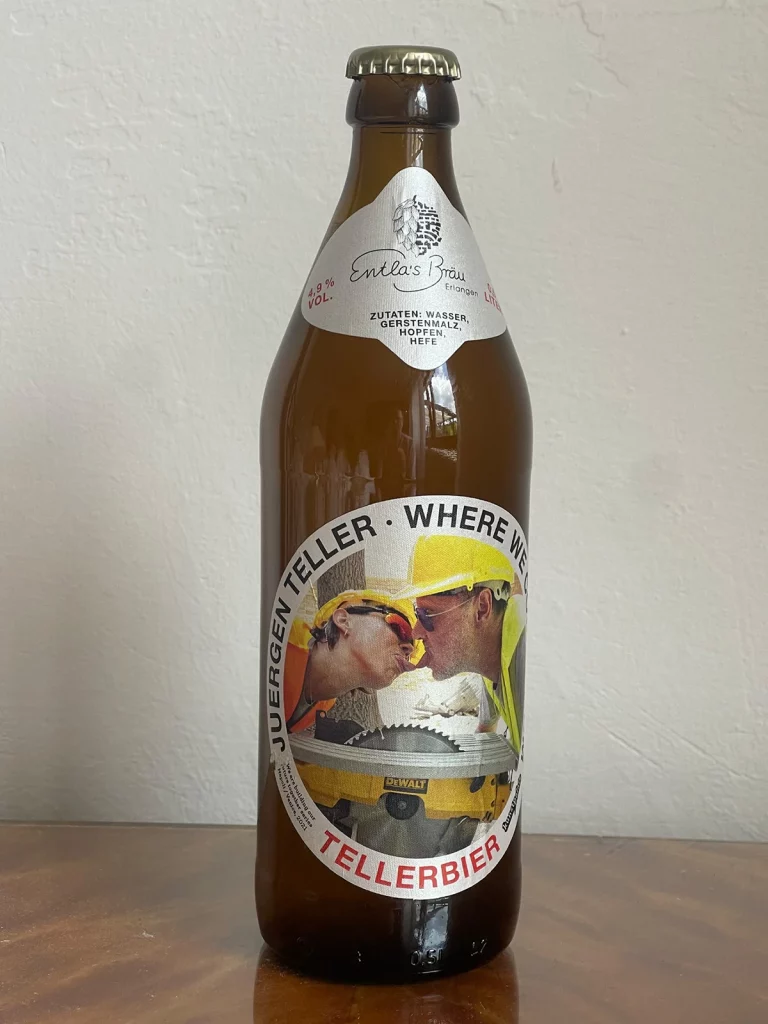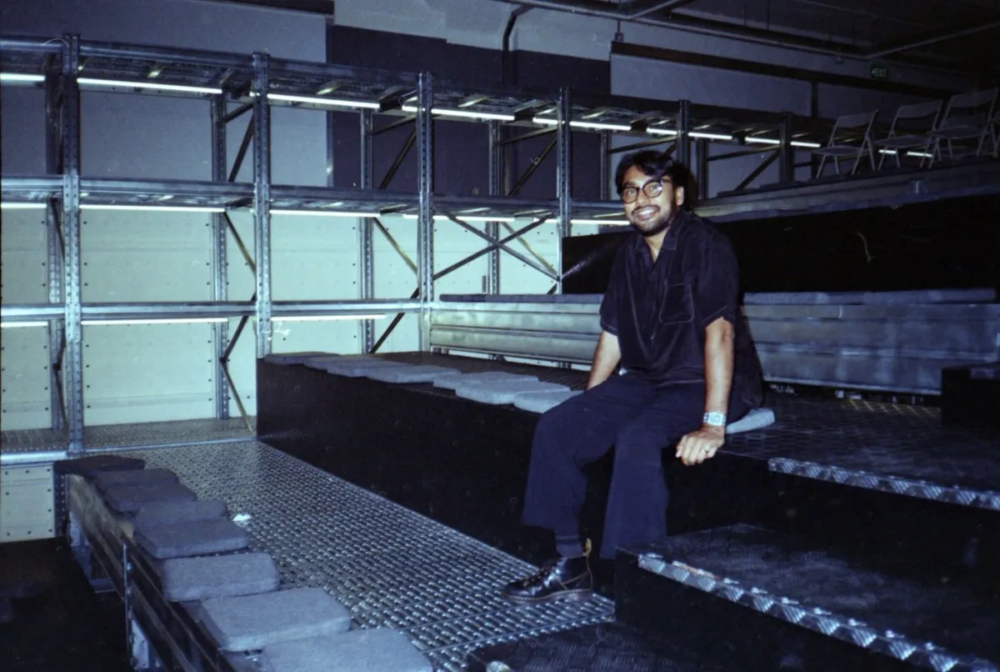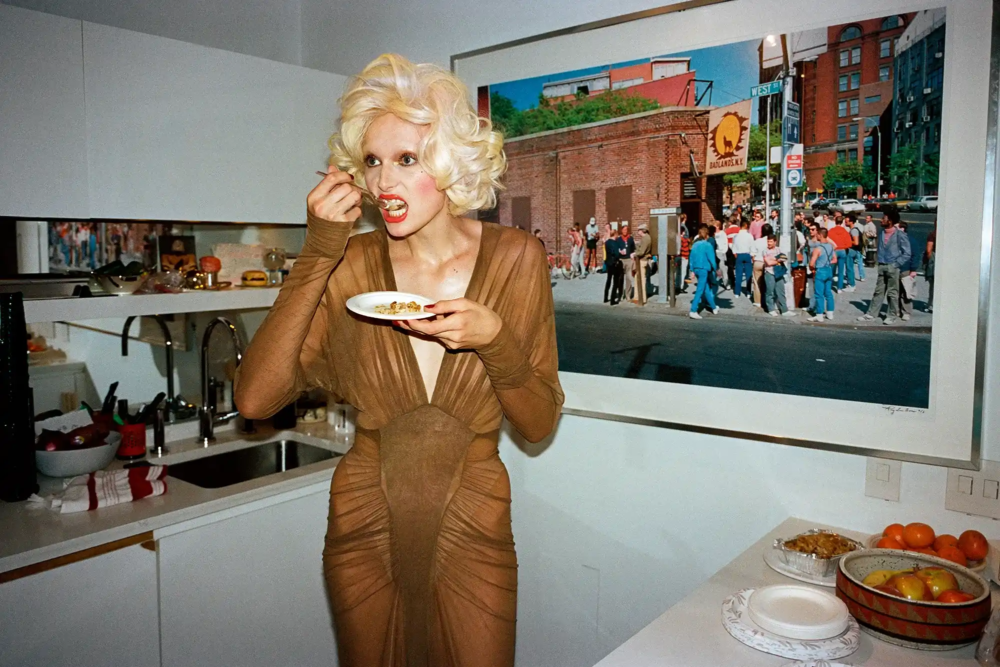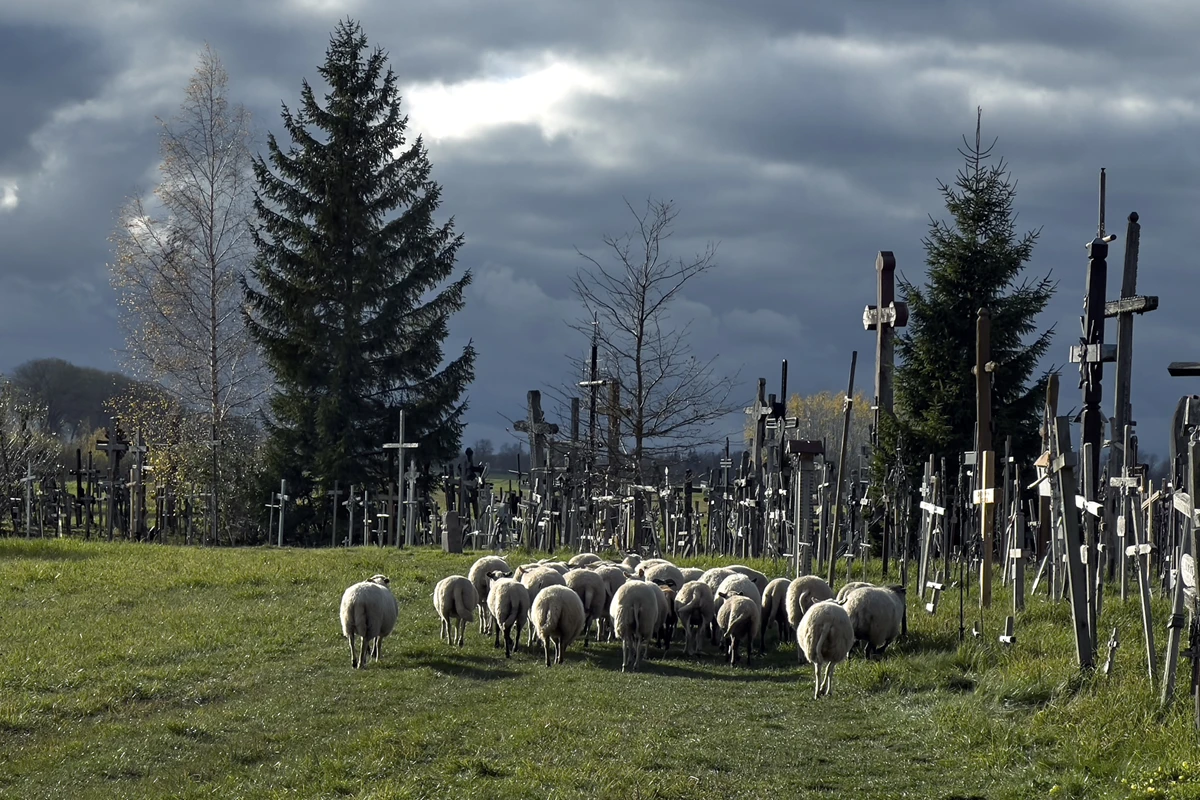
Can Juergen Teller be Just Like Us?
Happy Wife, Happy Life – in 7 ½ at Sabbioneta’s Palazzo Giardino, Juergen Teller and Dovile Drizyte turns historic ceilings and raw snapshots into an intimate stage for love, legacy, and domestic spectacle
Juergen Teller’s photographs are everywhere
On a rainy night in Milan, Juergen Teller’s photographs for a recent Ferragamo ad light up the canopied space of a tram stop. “I think this means more for Ferragamo than it does for Teller,” someone says as they wait to get taken home across the city of fashion ads and commercial dreams.
Teller—once just a working-class kid from Germany—is now chasing Alexander Skarsgård through a forest for a scat-themed film they conjured up together. He’s no longer simply documenting fame. He’s become a kind of alchemist—someone who transfers the aura of celebrity through photography, transforming others with his lens.
7 ½ in the Palazzo Giardino of Sabbioneta
In his 2025 show 7 ½, housed in the frescoed Palazzo Giardino of Sabbioneta, he turns that alchemy on himself and his wife, Dovile Drizyte. Their relationship—intimate, collaborative, half-documented, half-mythologized—is the center of the exhibition.
The first images you see are of the couple affixed to the ceiling, framed by the ornate decorations of the room. Both are in neon workers’ fatigues, seemingly mid-task. It feels like a metaphor for the work of their relationship. In a world of chaos and ruin, the two are bound together—raising a child, photographing the pope, returning to their home countries hand-in-hand, whatever the job may be.
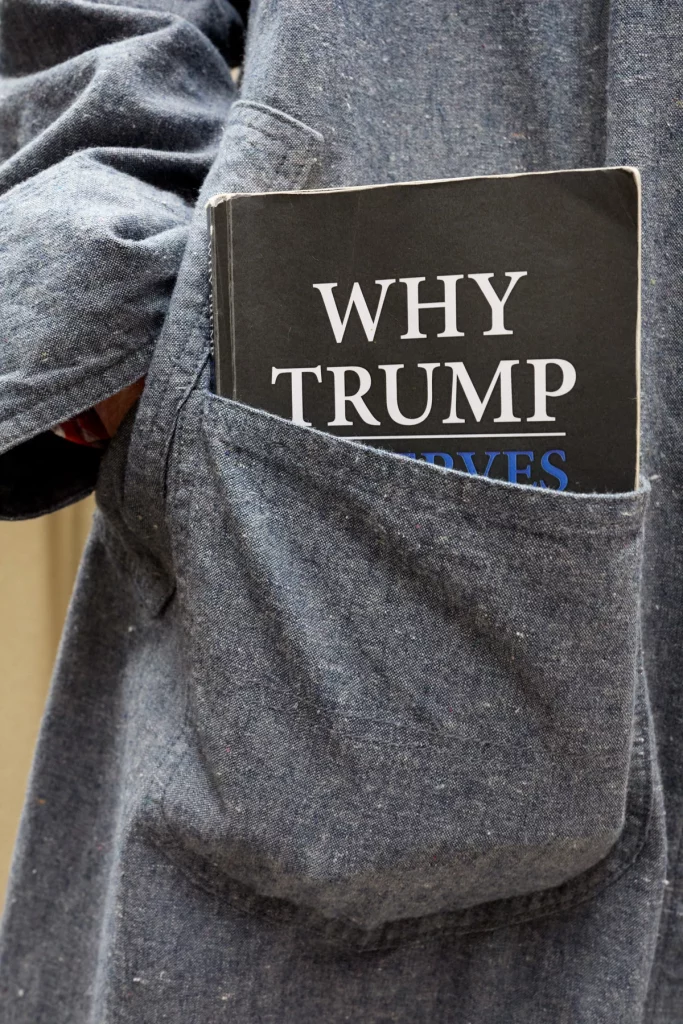
Juergen Teller: From Father and Son to Husband and Wife
When Teller features himself in his photography, it always brings to mind his infamous 2003 image, Father and Son: dick out, cigarette in hand, standing on his father’s grave. That photo is still the baseline—angsty, raw, performatively tough. There’s a faux-hardness in it that smells like teen spirit, the sort of edginess used to shield soft, unformed youth from a brutal world.
These photos with Drizyte feature an older Teller, one who flashes a bit of belly and flaunts a bulging ass crack, enjoying a life that’s a work in progress. These images feel like a response to that earlier version of himself that says, “Life has happened. I’m happier now. Dovile has made it better.”
Juergen Teller: Being in Love with Dovile Drizyte
The show’s title references the years of their creative partnership and the time they spend together daily. Calling Drizyte a “muse” feels dated, even wrong—but as the female partner to the artist in title, we can’t ignore that trope. She takes the allure of that archetype and fuses it with much accredited collaboration throughout the show’s images and text. She’s not just in front of the lens, but behind it, beside it, and inside the whole machine.
Frescoes as Audience for Juergen Teller
Putting on a show in the Palazzo Giardino takes a bit of romantic arrogance. The place breathes with a UNESCO-grade “do-not-touch” ethos. But the figures on the wall, the gilded decorations, and the animals slinking from one surface to the next become much like us—spectators to Teller’s lifelong dance with fame.
He achieves here something he similarly has in his career: he shuts out the noise and you’re left staring through his point of view. There’s hellfire, Pythagorean forms, and fairies bursting from the frescoes, and the exhibition still has the ability to entrance you in the banal seductiveness of the morning coffees Teller makes for himself and Drizyte.
Leaving the show, one thing is clear: Juergen Teller loves his wife. He exposes their life together in these photographs, many of which look as if they were taken on an iPhone or some similarly raw, low-fidelity camera. It’s sincere—but it isn’t exactly relatable.
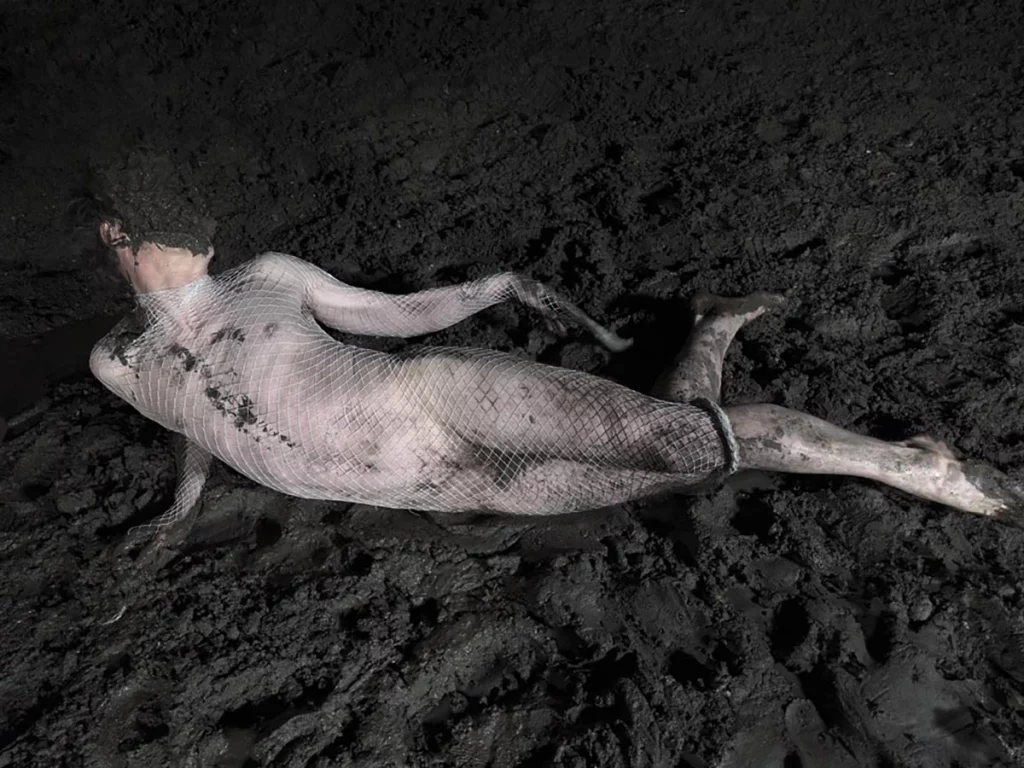
Can Juergen Teller be Just Like Us?
This show, with Juergen positioning himself as a blue-collar worker and a man waiting in a hospital room for his baby to be born, feels almost like a performance of reality. Punctuated by jet-setting and famous friends, there’s an uncanniness to the normalcy. At this point in his career, it becomes difficult to say something as simple as, “I’m Juergen, and here’s my wife, and we drink coffee.” It starts to feel more like a feature from People Magazine’s “Stars—They’re Just Like Us!” column, the one where you see the Olsen twins carrying a Birkin bag out of a Starbucks.
Yes, there’s a mother and a father and a baby—all the parts of the traditional family—but the child carries the name of friend and rockstar, Iggy Pop. She’s already been proposed a cover of System magazine, photographed in the same mythic, stylized language as Juergen’s portraits of Björk or Joan Didion.
Though neither Drizyte nor Teller are American, the image of celebrity they play with is unmistakably born in Hollywood. This stark portrayal of their life brings to mind something John Steinbeck wrote in 1960 for Esquire, in his essay A Primer on the 30s: “Except for the field organizers of strikes, who were pretty tough monkeys and devoted, most of the so-called Communists I met were middle-class, middle-aged people playing a game of dreams.”
How Juergen Teller Captures Dreams of Domesticity
Is there still an appetite for Teller’s particular dream? The opulence of fame is something that, at this point, he can’t really shake. Between the cigarettes, the slow mornings in bed, and intimate photos of his home life, the everyday starts to feel strangely unbelievable—almost like a parody of itself. It isn’t mockery exactly, but it isn’t entirely earnest either. That tension—between a longing for the ordinary and the impossibility of actually living it—is one of the show’s most honest threads. Teller isn’t pretending to be normal. He’s reaching for it, circling it, studying it, even as it keeps slipping away.
Steinbeck’s quote—about this “middle-class game”—feels relevant because in these images because you sense someone still fumbling in the dark for what a life should look like. Despite decades of shaping culture, photographing icons, and becoming one himself, there’s a visible uncertainty in Teller: What does his real look like?
That search is clearest in the love he shows for his wife. Portrayed nude, holding their child, eating an ice cream—you can see a kind of quotidian peace that Teller has gained in this relationship. But it’s also underscored by a kind of existential shakiness: What does it mean to be rich and successful, and still have to live each day? To be someone tethered to a cold, rural, postwar Europe? To still carry the ache of a childhood shaped by absence? And how do you do justice to that pain when your entire life is seen through rose-colored glasses—ones you made everyone wear?
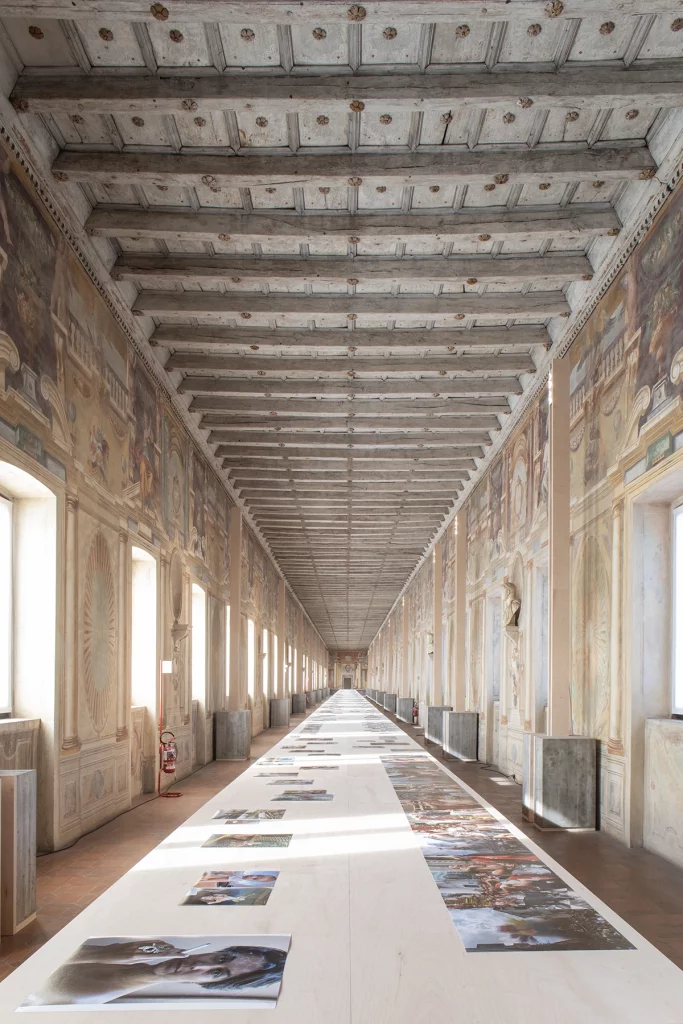
Life is Large and Juergen Teller Showed us That
With Teller, I think it’s best to see celebrity not as a beautifying filter for his work, but as the frame that contains it. To engage with his photography, you have to accept celebrity’s uncanniness and contradictions.
Juergen Teller is famous not just because he knew the right people or landed in the right places at the right times—though he certainly did that too. He deserves to be larger than life because, over the course of his career, he’s shown us that life itself is large. He’s done what any responsible celebrity should: taken a pop star or a designer and created an aspiration that’s as glamorous and public as it is gritty and accessible.
Juergen Teller
Juergen Teller (b. 1964, Erlangen, Germany) is a photographer who works between fashion, art, and autobiography. He has shot campaigns for major fashion houses and editorials for leading publications. His work has been exhibited internationally, including at the ICA London, Fondation Cartier, and Triennale Milan. His exhibition 7 ½, created alongside his wife Dovile Drizyte, will be on view in the Palazzo Giardino in Sabbionetta, Italy from April 13th to November 23rd, 2025.
